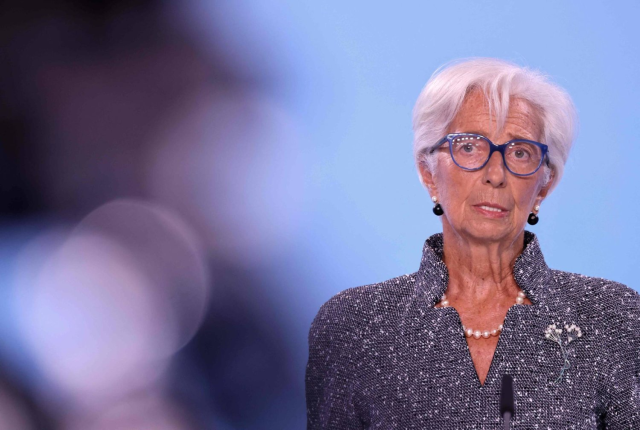The European Central Bank (ECB) on Thursday cut interest rates by a quarter percentage point to 3.5% in response to falling Eurozone inflation and signs that the bloc’s economy risks grinding to a halt.
The decision came while ECB president Christine Lagarde warned that the recovery is continuing to face some headwinds.
She said Thursday’s decision to lower the benchmark deposit rate for the second time this year was “unanimously decided.”
The decision also comes less than a week before the Federal Reserve is widely tipped to begin loosening US monetary policy. The Bank of England, which has reduced rates once so far, meets a day later.
Experts forecast that the ECB will likely lower interest rates again in its upcoming two meetings this year.
The ECB cut once in June and then hit pause in July before going on summer break in August.
The rate-setting council led by Lagarde has to juggle concerns about a disappointing outlook for growth against – which argues for cuts – against the need to make sure inflation is going to reach the bank’s 2% target and stay there – which would support keeping rates higher for a bit longer.
Inflation in the 20 countries that use the euro currency fell to 2.2% in August, not far from the ECB’s 2% target, down from 10.6% at its peak in October 2022.
At her post-decision news conference, Lagarde said recent data had confirmed “our confidence that we are heading towards our target in a timely manner.”
Following Lagarde’s comments, the performance of euro to US Dollar rose about 0.27%, selling at 1.1041.
ECB Staff see headline inflation averaging 2.5% in 2024, 2.2% in 2025 and 1.9% in 2026, as in the June projections.
Also, inflation is expected to rise again in the latter part of this year, partly because previous sharp falls in energy prices will drop out of the annual rates.
“Inflation should then decline towards our target over the second half of next year,” Lagarde said.
However, she declined to detail the bank's future rate-cutting path, only saying that decisions would be made “meeting by meeting” based on economic data, without committing to a fixed rate path.
Lagarde said, “We are determined to ensure that inflation returns to our two per cent medium-term target in a timely manner. We will keep policy rates sufficiently restrictive for as long as necessary to achieve this aim.”
She added that the ECB board will continue to follow a data-dependent and meeting-by-meeting approach to determining the appropriate level and duration of restriction.
“In particular, our interest rate decisions will be based on our assessment of the inflation outlook in light of the incoming economic and financial data, the dynamics of underlying inflation and the strength of monetary policy transmission. We are not pre-committing to a particular rate path,” the ECB President said.
Wage Growth
Lagarde said negotiated wage growth will remain high and volatile in 2025. However, overall labor costs are slowing, and the growth of compensation per employee is expected to markedly slow again next year.
She said staff expect unit labor cost growth to continue declining over the projection horizon owing to lower wage growth and a recovery in productivity.
Finally, profits are continuing to partially offset the inflationary effects of higher labor costs.
Lagarde noted that the labor market remains resilient. The unemployment rate was broadly unchanged in July, at 6.4%. At the same time, employment growth slowed to 0.2% in the second quarter, from 0.3% in the first.
Recent survey indicators point to a further moderation in demand for labor, and the job vacancy rate has fallen closer to pre-pandemic levels, the ECB president said.
According to survey indicators, Lagarde said the recovery is continuing to face some headwinds.
“We expect the recovery to strengthen over time, as rising real incomes allow households to consume more. The gradually fading effects of restrictive monetary policy should support consumption and investment,” she said.
ECB staff project that the economy will grow by 0.8% in 2024, rising to 1.3% in 2025 and 1.5% in 2026. This is a slight downward revision compared with the June projections, mainly owing to a weaker contribution from domestic demand over the next few quarters.




















